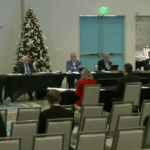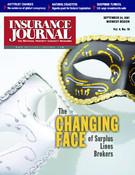The collapse of the subprime mortgage lending industry has dominated headlines, led to turmoil in the credit and financial markets, and left the residential real estate marketplace in disarray. It also has generated waves of litigation, with the lawsuits pointing in just about every possible direction.
In this flood of lawsuits, there are several growing waves of litigation of particular interest to the professional liability insurance industry. The most significant wave involves subprime lending-related securities class action lawsuits. As of Sept. 7, 2007, 13 companies and their directors and officers had been sued in securities class action lawsuits related to subprime lending. In addition, two home construction companies have been sued in subprime related securities class lawsuits, and two lenders have been sued under the Employment Retirement Income Security Act (ERISA) by their employees in connection with company stock in the employees’ 401(k) plans.
In all likelihood, these litigation waves will continue to grow and spread outward. According to the Office of the Comptroller of the Currency, more than $1.08 trillion in securitized subprime mortgage debt is being carried on the balance sheets of untold numbers of enterprises outside the lending industry. These asset-backed securities are only as valuable as the performance of the underlying mortgages. Not only are mortgage foreclosures already running at historically high levels, they are likely to increase as adjustable rate mortgages reset to higher interest rates. According to the Bank of America, more than $1.3 trillion in adjustable rate mortgages — 70 percent of them subprime — will reset before the end of 2008.
Aggrieved parties seeking to recoup their losses will look to supposedly deep pocket third-parties to try to hold them responsible. As litigants look to assign blame, they can be expected to look to the gatekeepers — those who supposedly could have prevented the harm. Litigants are already attempting to assign blame to directors and officers; credit rating agencies; mortgage brokers; real estate brokers; and real estate appraisers. Investors also have sought to establish the liability of auditors who gave mortgage lenders clean audit opinions shortly before the lenders failed. Undoubtedly blame will be cast upon attorneys, investment advisors, hedge fund and pension fund managers, and others whom plaintiffs will claim to have played some role.
These claims will be complicated by bankruptcy issues, as many of the lending institutions have filed or will file for bankruptcy. There will also be potential coverage issues under conduct exclusions, particularly where there are allegations of fraudulent misconduct.
The subprime lending mess has had an impact on the directors and officers underwriting environment. Companies that are now or have been involved in the subprime lending industry face a D&O insurance marketplace that is far different than just a few months ago. Companies with subprime mortgage lending risk may find themselves in a “hard to place” category. Even other companies involved more generally in residential real estate lending, and other aspects of the residential real estate business, may face heightened underwriting scrutiny.
D&O underwriters are also concerned about applicants’ possible balance sheet exposure to mortgage investment risk. Obvious places for underwriters to look for this risk include hedge funds and other alternative investment vehicles, mutual funds, investment banks, residential mortgage real estate investment trusts and insurance companies. But the underwriting inquiry will likely not be limited just to companies in these sectors; given the sheer magnitude of the mortgage-backed investment risk dispersed in the economy, the mortgage investment risk may have wound up in some unexpected places. Underwriters’ questions may not be limited to whether the applicant directly holds investments in mortgage-backed assets, but will also address whether the applicant has investments in hedge funds or other investment vehicles with significant exposure to mortgage-backed investments.
There is no doubt that the subprime lending mess could significantantly impact the D&O insurance industry and the professional liability insurance industry generally. The quick emergence of claims frequency around subprime mortgage issues and the uncertainty of the extent of the problem are likely making D&O insurers (and their reinsurers) more than just a little uncomfortable right now.
The effects on the D&O marketplace likely will be uneven, with some predictable sectors constricting but most others remaining competitive, at least in the short term. Whether the constrictive impact will become more generalized will depend on how large and how widespread the subprime litigation wave becomes.
Kevin M. LaCroix is an attorney and a director of the OakBridge Insurance Services, Beachwood, Ohio office.
Was this article valuable?
Here are more articles you may enjoy.


 Chubb, The Hartford, Liberty and Travelers Team Up on Surety Tech Launch
Chubb, The Hartford, Liberty and Travelers Team Up on Surety Tech Launch  After Years of Pushing Rate Hikes, Florida’s Citizens Now Wants HO Rate Decrease
After Years of Pushing Rate Hikes, Florida’s Citizens Now Wants HO Rate Decrease  Acrisure CEO Greg Williams Makes $400M Commitment to Michigan State University
Acrisure CEO Greg Williams Makes $400M Commitment to Michigan State University  Abbott Presses Congress for Legal Shield Over Preemie Baby Formula Lawsuits
Abbott Presses Congress for Legal Shield Over Preemie Baby Formula Lawsuits 


